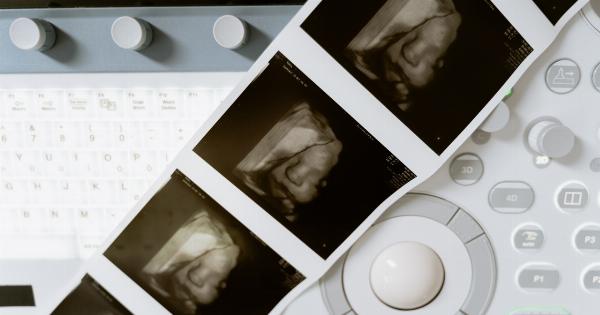Knee osteoarthritis (OA) is a degenerative joint disease that affects millions of people worldwide. It is characterized by the breakdown of cartilage in the knee joint, leading to pain, stiffness, and swelling.
Early detection and diagnosis of knee OA are crucial for proper management and treatment. Traditional diagnostic methods such as X-rays and magnetic resonance imaging (MRI) have limitations in terms of cost, invasiveness, and availability.
However, novel acoustic technology shows promising potential in providing a non-invasive and accurate diagnostic tool for knee OA.
Understanding Knee Osteoarthritis
Before delving into the novel acoustic technology for knee OA diagnosis, it is important to understand the condition itself. Knee osteoarthritis is the most common type of arthritis, affecting approximately 14 million adults in the United States alone.
It occurs when the protective cartilage that cushions the ends of bones within the knee joint wears down over time. This can be due to factors such as age, genetics, obesity, and repetitive stress on the knees.
Limitations of Traditional Diagnostic Methods
Currently, X-rays and MRI scans are commonly used to diagnose knee osteoarthritis. X-rays can provide images of bone structures and joint alignment, but they do not provide information about the condition of the cartilage or soft tissues.
MRI scans, on the other hand, can visualize both the bone and soft tissues, including cartilage. However, MRI scans are expensive, time-consuming, and may not be readily available in all healthcare settings.
Novel Acoustic Technology: Ultrasound Imaging
Ultrasound imaging, commonly used during pregnancy to monitor the development of a fetus, has emerged as a potential tool for knee osteoarthritis diagnosis.
This non-invasive and cost-effective technology uses high-frequency sound waves to create real-time images of the internal structures of the knee joint, including cartilage.
How Does Ultrasound Imaging Work?
During an ultrasound examination for knee OA diagnosis, a transducer is placed on the skin over the knee joint. The transducer emits sound waves that penetrate the tissues and bounce back when they encounter different structures within the joint.
These echoes are then converted into visual images on a computer screen, allowing healthcare professionals to assess the condition of the knee joint.
Advantages of Ultrasound Imaging for Knee OA Diagnosis
Ultrasound imaging offers several advantages over traditional diagnostic methods:.
- Non-invasive: Unlike X-rays or MRI scans, ultrasound imaging does not involve any radiation or injections, making it a safer option for patients.
- Real-time imaging: Ultrasound provides real-time images, allowing for immediate assessment of the knee joint.
- Cost-effective: Compared to MRI scans, ultrasound imaging is more affordable, making it accessible to a larger population.
- Portable and readily available: Ultrasound machines are portable and can be easily moved to different healthcare settings, increasing their availability.
- No known contraindications: Ultrasound imaging is generally safe and can be used on individuals with pacemakers or metal implants.
Research and Evidence
Several studies have explored the efficacy of ultrasound imaging in diagnosing knee osteoarthritis.
One study published in the journal Arthritis Care & Research found that ultrasound examination had a sensitivity of 71% and a specificity of 82% in detecting knee OA compared to clinical examination alone. Another study published in the journal Annals of the Rheumatic Diseases concluded that ultrasound imaging can detect early structural changes in the knee joint even before the onset of symptoms.
Challenges and Future Directions
While ultrasound imaging shows promise in knee OA diagnosis, there are still challenges that need to be addressed.
Standardization of imaging protocols and interpretation guidelines is essential to ensure consistent and accurate results across different healthcare settings. Additionally, further research is needed to validate the effectiveness of ultrasound imaging in different patient populations and to establish its role in guiding treatment decisions.
Conclusion
Novel acoustic technology in the form of ultrasound imaging offers a promising approach to diagnose knee osteoarthritis.
With its non-invasive nature, real-time imaging capabilities, and cost-effectiveness, ultrasound imaging has the potential to revolutionize the diagnosis and management of knee OA. Further research and advancements in this field will likely enhance the accuracy and utility of ultrasound in diagnosing knee OA, leading to improved patient outcomes and quality of life.






















